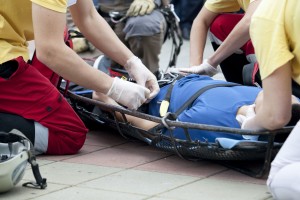 Rollover accidents can cause severe and catastrophic injuries. They are often single-vehicle accidents, which means that victims can be left undiscovered and unattended for hours or even days. Rollover accidents are often the result of defects in the vehicle, but no matter the cause of the accident, the injuries themselves are often the result of crashworthiness defects, such as poor roof crush resistance.
Rollover accidents can cause severe and catastrophic injuries. They are often single-vehicle accidents, which means that victims can be left undiscovered and unattended for hours or even days. Rollover accidents are often the result of defects in the vehicle, but no matter the cause of the accident, the injuries themselves are often the result of crashworthiness defects, such as poor roof crush resistance.
Common Rollover Injuries
Examples of common rollover accident injuries include:
- Bursting fracture in the C5 to C7 vertebrae of the cervical spine (neck)
- Brain injury
- Spinal cord injury
- Crush injuries
- Amputation
- Neck injury
- Back injury
- Broken bones and fractures
- Severe road rash
- Severe burns
- Suffocation
- Decapitation
Roof Crush Injuries
Poor roof crush resistance can lead to roof crush injuries. These include the severe injuries which can be caused by impact with the roof of the vehicle, as well as injuries caused by damage to the windshield and windows and seatbelt failure.
Seatbelt failure can lead to “diving injuries” in which the slack in the seatbelt allows you to gain momentum before striking the roof. The result is vertebrae fractures which put pressure on the spinal cord.
Ejection Injuries
Seat belt failure and burst windows and windshield can lead to ejection or partial ejection from a vehicle. When ejected from the vehicle you can strike objects outside the vehicle, be struck by other vehicles, and even be crushed by your own vehicle. Partial ejection may be worse than full ejection, because you are exposed to objects and surfaces outside the vehicle while still being drug along by the vehicle itself. Partial ejection can lead to injuries such as amputations and decapitation.















